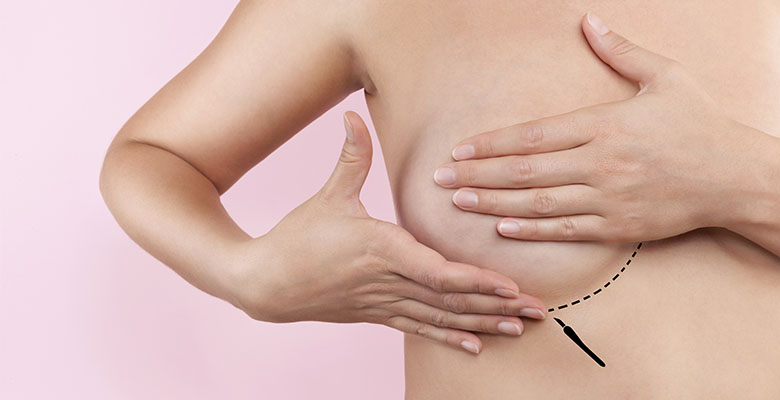Types of Breast Augmentation Incision Technique
This article will elaborate more on the four types of breast augmentation incisions typically made, along with what to expect. Some key considerations include your personal preference on scar visibility and surgical skills, as well as your doctor’s professional recommendation. Read on to find out more about the four types of breast augmentation incision, namely Inframammary Fold, Periareolar, Trans-axillary and Trans-umbilical incision.



Typically, a recommended choice by the doctor, this incision is made under the breast. As such, the scar is slightly hidden at the crease or fold directly under the breast. An additional benefit lies in the incision’s close proximity to the breast, which gives surgeons better control over the implant placement to ensure breast symmetry.
If you are planning to breastfeed in the future, this incision has a lower risk of affecting breastfeeding and changes in nipple sensation.
However, the scar is not as hidden compare to the other incisions. It may be visible to the eye if the scar does not lie within the crease.

The incision is made around the nipple to better conceal the scar. This option is great for those who want to feel confident while wearing a bikini since the scar will be well hidden by the fabric. Additionally, the natural color of the nipple helps disguise the scars too.
However, as the nipple area may become more sensitive post-surgery, you may experience a loss or change in sensation in your nipple. Additionally, this type of incision may also affect breast feeding in future. As such, it will be good to engage in parenthood planning before deciding on this incision type. This procedure is usually not recommended for younger women who intend to breastfeed their children.

This form of incision is made under the natural folds in the armpit. While the scar will lighten over time, it will still be present. For those who are conscious about how it may look when wearing a bikini or sleeveless attires, it may not be the most suitable incision to go for. This option is also popular amongst women getting smaller implants that are approximately 200cc to 350cc.
However, the trans-axillary scar cannot be reused and a new incision type will need to be made for future breast augmentations.
As the name suggests, this incision type is done through the navel. Empty implants are inserted through the belly button, and upwards to the breast. It is then inflated. While an uncommon choice, this form of incision conceals the scar well in the belly button.
However, since the incision is very far away from the breast, it can be difficult to attain symmetrically shapes breasts. If not done well, you may need to do a revision surgery to rectify the overall look. In fact, the FDA-approved labeling warns surgeons to not place breast implants through the peri-umbilical approach
Conclusion
After inserting the implants into the incision, the incision will subsequently be stitched up. During this process, your doctor may put temporary drains in the incision before closing to prevent fluid or blood accumulation. There may also be catheters placed at the incision before closing it up to provide pain relief. Both will be removed during a follow-up visit post-surgery.
